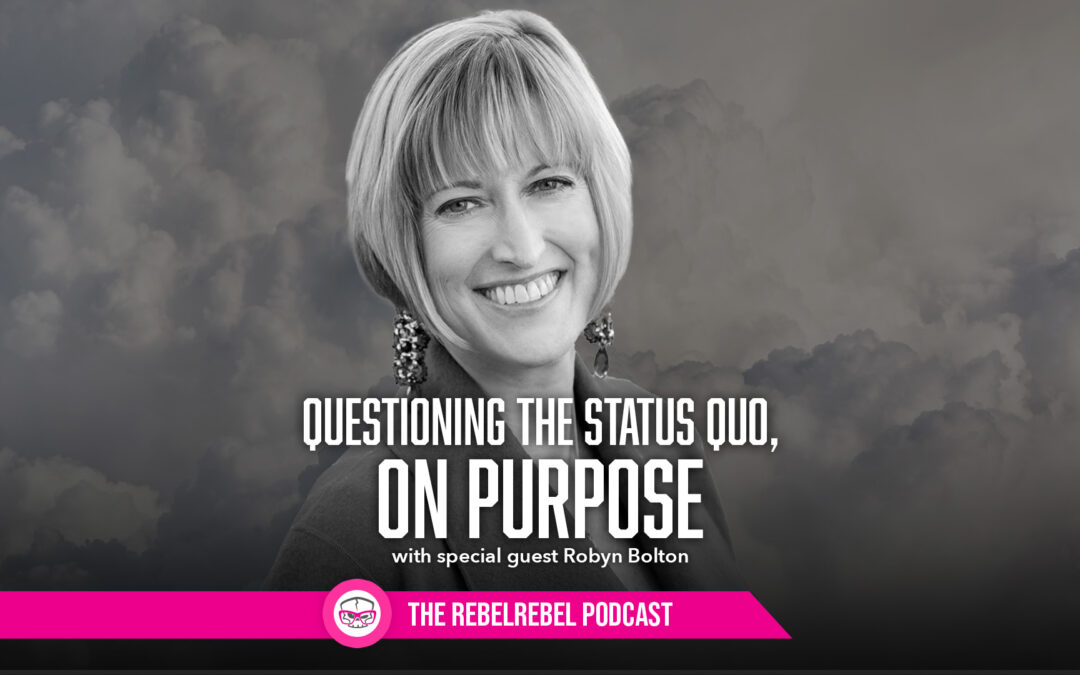
by Robyn Bolton | Jul 8, 2025 | Strategic Foresight, Strategy
You stand on the brink of an exciting new adventure. Turmoil and uncertainty have convinced you that future success requires more than the short-term strategic and business planning tools you’ve used. You’ve cut through the hype surrounding Strategic Foresight and studied success. You are ready to lead your company into its bold future.
So, where do you start?
Most executives get caught up in all the things that need to happen and are distracted by all the tools, jargon, and pretty pictures that get thrown at them. But you are smarter than that. You know that there are three things you must do at the beginning to ensure ultimate success.
Give Foresight Executive Authority and Access
Foresight without responsibility is intellectual daydreaming.
While the practice of research and scenario design can be delegated to planning offices, the responsibility for debating, deciding, and using Strategic Foresight must rest with P&L owners.
Amy Webb’s research at NYU shows that when a C-Suite executive with the authority to force strategic reviews oversaw foresight activities, the results were more likely to be acted on and integrated into strategic and operational plans. Shell serves as a specific example of this, as its foresight team reported directly to the executive committee, so that when scenarios explored dramatic oil price volatility, Shell executives personally reviewed strategic portfolios and authorized immediate capability building.
Start by asking:
- Who can force strategic reviews outside of the traditional planning process?
- What triggers a review of Strategic Foresight scenarios?
- How do we hold people accountable for acting on insights?
Demand Inputs That Challenge Your Assumptions
If your Strategic Foresight conversations don’t make you uncomfortable, you’re doing them wrong.
Webb’s research also shows that successful foresight systematically explores fundamental changes that could render the existing business obsolete.
Shell’s scenarios went beyond assumptions about oil price stability to explore supply disruptions, geopolitical shifts, and demand transformation. Disney’s foresight set aside traditional assumptions about media consumption and explored how technology could completely reshape content creation, distribution, and consumption.
Start by asking these questions:
- Is the team going beyond trend analysis and exploring technology, regulations, social changes, and economic developments that could restructure entire markets?
- Who are we talking to in other industries? What unusual, unexpected, and maybe crazy sources are we using to inform our scenarios?
- Does at least one scenario feel possible and terrifying?
Integrate Foresight into Existing Planning Processes
Strategic Foresight that doesn’t connect to resource allocation decisions is expensive research.
Your planning processes must connect Strategic Foresight’s long-term scenarios to Strategic Planning’s 3–5-year plans and to your annual budget and resource decisions. No separate foresight exercises. No parallel planning tracks. The cascade from 20-year scenarios to this year’s investments must be explicit and ruthless.
When Shell’s scenarios explored dramatic oil price volatility over decades, Shell didn’t file them away and wait for them to come true. They immediately reviewed their strategic portfolio and developed a 3–5-year plan to build capabilities for multiple oil futures. This was then translated into immediate capital allocation changes.
Disney’s foresight about changing media consumption in the next 20 years informed strategic planning for Disney+ and, ultimately, its operational launch.
Start by asking these questions:
- How is Strategic Foresight linked to our strategic and business planning processes?
- How do scenarios flow from 20-year insights through 5-year strategy to this year’s budget decisions?
- How is the integration of Strategic Foresight into annual business planning measured and rewarded?
Three Steps. One Outcome.
Strategic foresight efforts succeed when they have the executive authority, provocative inputs, and integrated processes to drive resource allocation decisions. Taking these three steps at the very start sets you, your team, and your organization up for success. But they’re still not a guarantee.
Ready to avoid the predictable pitfalls? Next week, we’ll consider why strategic foresight fails and how to prevent your efforts from joining them.

by Robyn Bolton | Jun 25, 2025 | Leadership, Stories & Examples, Strategy
Convinced that Strategic Foresight shows you a path through uncertainty? Great! Just don’t rush off, hire futurists, run some workshops, and start churning out glossy reports.
Activity is not achievement.
Learning from those who have achieved, however, is an excellent first activity. Following are the stories of two very different companies from different industries and eras that pursued Strategic Foresight differently yet succeeded because they tied foresight to the P&L.
Shell: From Laggard to Leader, One Decision at a Time
It’s hard to imagine Shell wasn’t always dominant, but back in the 1960s, it struggled to compete. Tired of being blindsided by competitors and external events, they sought an edge.
It took multiple attempts and more than 10 years to find it.
In 1959, Shell set up their Group Planning department, but its reliance on simple extrapolations of past trends to predict the future only perpetuated the status quo.
In 1965, Shell introduced the Unified Planning Machinery, a computerized forecasting tool to predict cash flow based on current results and forecasted changes in oil consumption. But this approach was abandoned because executives feared “that it would suppress discussion rather than encourage debate on differing perspectives.”
Then, in 1967, in a small 18th-floor office in London, a new approach to ongoing planning began. Unlike past attempts, the goal was not to predict the future. It was to “modify the mental model of decision-makers faced with an uncertain future.”
Within a few years, their success was obvious. Shell executives stopped treating scenarios as interesting intellectual exercises and started using them to stress-test actual capital allocation decisions.
This doesn’t mean they wholeheartedly embraced or even believed the scenarios. In fact, when scenarios suggested that oil prices could spike dramatically, most executives thought it was far-fetched. Yet Shell leadership used those scenarios to restructure their entire portfolio around different types of oil and to develop new capabilities.
The result? When the 1973 oil crisis hit and oil prices quadrupled from $2.90 to $11.65 per barrel, Shell was the only major oil company ready. While competitors scrambled and lost billions, Shell turned the crisis into “big profits.”
Disney: From Missed Growth Goals to Unprecedented Growth
In 2012, Walt Disney International’s (WDI) aggressive growth targets collided with a challenging global labor market, and traditional HR approaches weren’t cutting it.
Andy Bird, Chairman of Walt Disney International, emphasized the criticality of the situation when he said, “The actions we make today are going to make an impact 10 to 20 years down the road.”
So, faced with an unprecedented challenge, the team pursued an unprecedented solution: they built a Strategic Foresight capability.
WDI trained over 500 leaders across 45 countries, representing five percent of its workforce, in Strategic Foresight. More importantly, Disney integrated strategic foresight directly into their strategic planning and performance management processes, ensuring insights drove business decisions rather than gathering dust in reports.
For example, foresight teams identified that traditional media consumption was fracturing (remember, this was 2012) and that consumers wanted more control over when and how they consumed content. This insight directly shaped Disney+’s development.
The results speak volumes. While traditional media companies struggled with streaming disruption, Disney+ reached 100 million subscribers in just 16 months.
Two Paths. One Result.
Shell and Disney integrated Strategic Foresight differently – the former as a tool to make high-stakes individual decisions, the latter as an organizational capability to affect daily decisions and culture.
What they have in common is that they made tomorrow’s possibilities accountable to today’s decisions. They did this not by treating strategic foresight as prediction, but as preparation for competitive advantage.
Ready to turn these insights into action? Next week, we’ll dive into the tools in the Strategic Foresight toolbox and how you and your team can use them to develop strategic foresight that drives informed decisions.

by Robyn Bolton | Jun 17, 2025 | Leadership, Strategy
Are you spooked by the uncertainty and volatility that defines not just our businesses but our everyday lives? Have you hunkered down, stayed the course, and hoped that this too shall pass? Are you starting to worry that this approach can’t go on forever but unsure of what to do next? CONGRATULATIONS, consultants have heard your cries and are rolling out a shiny new framework promising to solve everything: Strategic Foresight.
Strategic foresight is the latest silver bullet for navigating our chaotic, unpredictable world.
Remember in 2016 when Agility was going to save us all? Good times.
As much as I love rolling my eyes at the latest magic framework, I have to be honest – Strategic Foresight can live up to the hype. If you do it right.
What Strategic Foresight Actually Is (Spoiler: Not a Silver Bullet)
A LOT is being published about Strategic Foresight (I received 7 newsletters on the topic last week) and everyone has their own spin. So let’s cut through the hype and get back to basics
What it is: Strategic foresight is the systematic exploration of multiple possible futures to anticipate opportunities and risks, enabling informed decisions today to capture advantages tomorrow.
There’s a lot there so let’s break it down:
- Systematic exploration: This isn’t guessing, predicting, or opining. This is a rigorous and structured approach
- Multiple possible futures: Examines multiple scenarios because we can’t possibly forecast or predict the one future that will occur
- Enabling informed decisions today: This isn’t an academic exercise you revisit once a year. It informs and guides decisions and actions this year.
- Capture advantages tomorrow: Positions you to respond to change with confidence and beat your competition to the punch
How it fits: Strategic Foresight doesn’t replace what you’re doing. It informs and drives it.
| Approach |
Timeline |
Focus |
| Strategic Foresight |
5-20+ years |
Explore possible futures |
| Strategic Planning |
3-5 years |
Create competitive advantage |
| Business Planning |
Annual cycles |
Execute specific actions |
The sequence matters: Foresight → Strategic Planning → Business Planning.
This sequence also explains why Strategic Foresight is so hot right now. Systemic change used to take years, even decades, to unfold. As a result, you could look out 3-5 years, anticipate what would be next, and you would probably be right.
Now, systemic change can happen overnight and be undone by noon the next day. Whatever you think will happen will probably be wrong and in ways you can’t anticipate, let alone plan for and execute against.
Strategic Foresight’s rigorous, multi-input approach gives us the illusion of control in a world that seems to be spinning out of it.
How to Avoid the Illusion and Get the Results.
Personally, I love the illusion of control BUT as a business practice, I don’t recommend it.
Strategic Foresight’s benefits will stay an illustion if you don’t:
- Develop in-house strategic foresight capabilities. Amy Webb’s research at NYU shows that companies using rigorous foresight methodologies consistently outperform those stuck in reactive mode. Shell’s legendary scenario planning helped them navigate oil crises while competitors flailed. Disney’s Natural Foresight® Framework keeps them ahead of entertainment trends that blindside others.
- Integrate foresight into your annual strategic planning cycle: Strategic foresight is a front-end effort that makes your 3-5 year strategy more robust. If you treat it like a separate exercise where you hire futurists, and run some workshops, and check the Strategic Foresight box, you won’t see any benefits or results.
What’s Next?
Strategic foresight isn’t a silver bullet, but it can be a path through uncertainty to advantage and growth.
The difference between success and failure comes down to execution. Do you treat it as prediction or preparation? Do you integrate it with existing planning or silo it in innovation labs?
Ready to separate the hype from the hard results? Our next post shows you what two industry leaders learned about turning foresight into competitive advantage and how you can use those lessons to your benefit

by Robyn Bolton | Jun 13, 2025 | Podcasts

by Robyn Bolton | Jun 10, 2025 | Customer Centricity, Leadership
The data speaks for itself: Your employees don’t believe you practice customer-first leadership.
According to Gallup’s research, only one in five of your people think you make decisions with customers in mind. That means four out of five watch you say one thing and do another. Every. Single. Day.
And it’s getting worse. Fewer than three in ten of your employees feel proud of what they’re building for your customers. As a result, employee pride in what they create and deliver is at an all-time low.
You know what this means, don’t you? Your customer-first messaging isn’t inspiring anyone—it’s insulting them. Because they see the truth behind your town hall speeches, and the truth is that customers aren’t first.
How Are We Still Screwing This Up?
Customer-centricity has been business gospel for decades. We’ve got libraries full of case studies, armies of consultants, and enough “customer first” wall art to wallpaper the Apple HQ. So, how the hell are we getting worse at this?
Because most leaders treat customer focus like a box to check. They say the right words in town halls and analyst calls but make decisions that prioritize quarterly numbers, internal politics, and whatever shiny new idea they come up with.
Leaders say customers come first, then cut support staff to hit margins. They preach customer obsession, then ignore feedback that requires real change. They commission expensive customer journey maps, then never look at them again.
Employees see it all.
And when employees stop believing in what they deliver, customers know it immediately. Every burned-out support call, every half-hearted sales pitch, every policy that punishes the customer to boost the company’s profit.
You CAN do better
You only need to look as far as the telecom industry (?!?!?!) for an $800 million example.
In 2005, Arlene Harris co-founded GreatCall (now Lively) and did something radical: she built a company based on the Jobs to be Done of senior citizens. While everyone else chased flashy features for younger markets, she recognized that older Americans didn’t want a smartphone—they wanted a lifeline.
Harris delivered with the Jitterbug, a simple flip phone with giant buttons. But that was just the beginning. Focusing more on helping customers stay safe and connected than cool features for the tech geeks, she quickly built an ecosystem offering emergency response, health monitoring, 24/7 human support, and caregiver connectivity.
When Best Buy acquired GreatCall for $800 million in 2018, they weren’t buying a phone company. They were buying something rare: a trusted, high-value services company with intensely loyal customers.
Harris succeeded by doing precisely what the data shows most leaders aren’t doing: genuinely understanding and serving real customer needs.
WILL you do better?
Customer-first leadership isn’t a box to check. It’s basic leadership integrity. It’s the difference between meaning what you say and just saying what sounds good.
When four out of five of your employees don’t trust your customer commitment, the problem isn’t your strategy deck, digital transformation, or tariffs. The problem is you.
So here’s your moment of truth: When was the last time you listened to customer service calls? Not the sanitized highlights your team shows you—the raw, unfiltered frustration of someone who can’t get help. When did you last sit in a waiting room and watch how people navigate your system? Or stock a shelf and see what customers actually do?
If you can’t remember, that’s your answer. If you’ve never done it, that’s worse.
The question is: Will you keep performing customer-centricity, or start practicing it?




